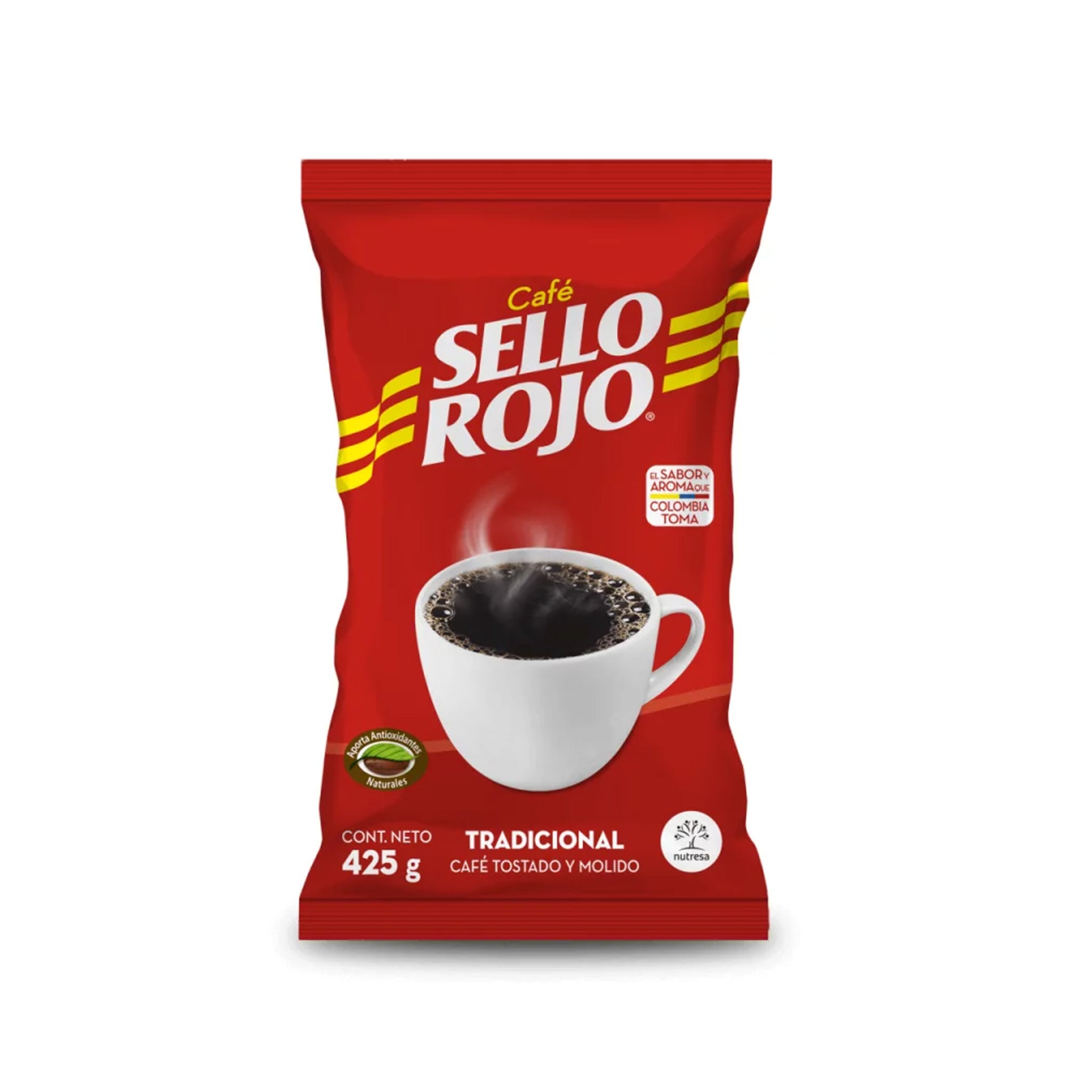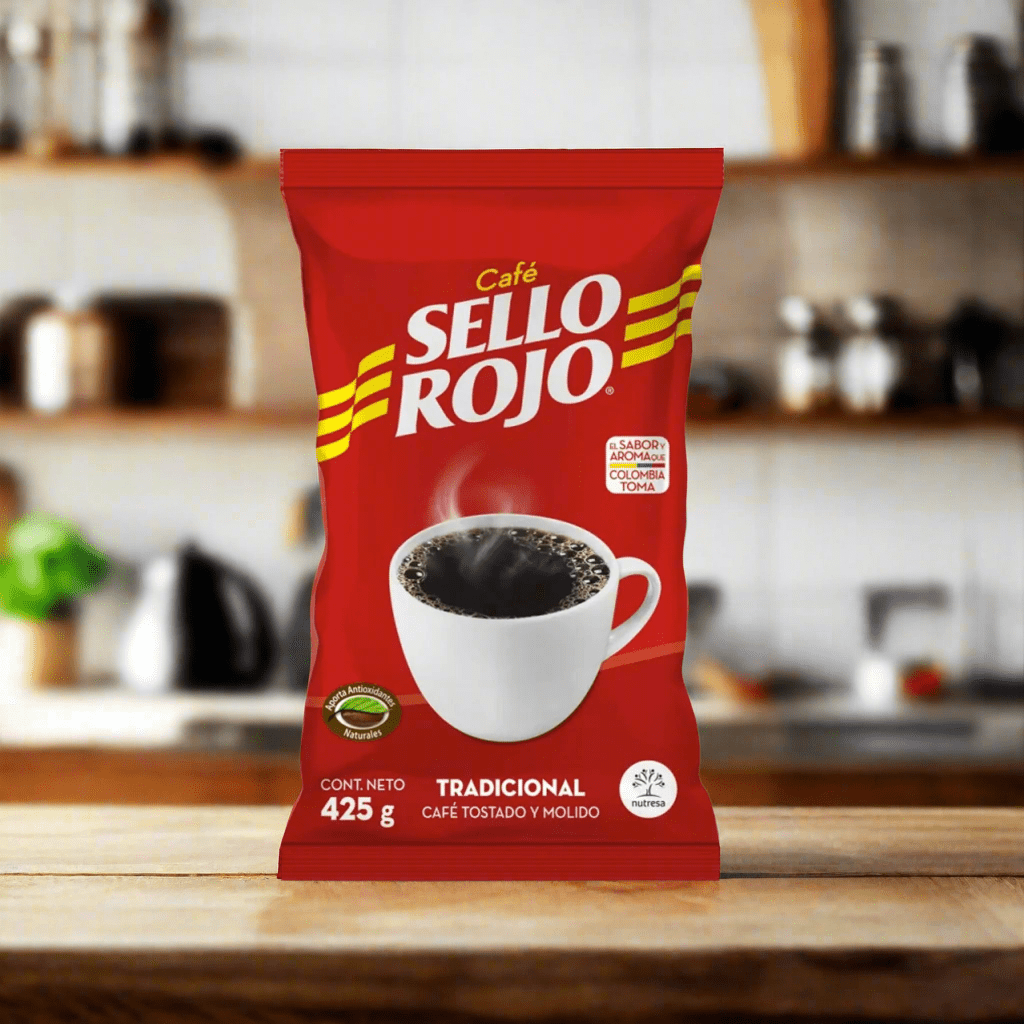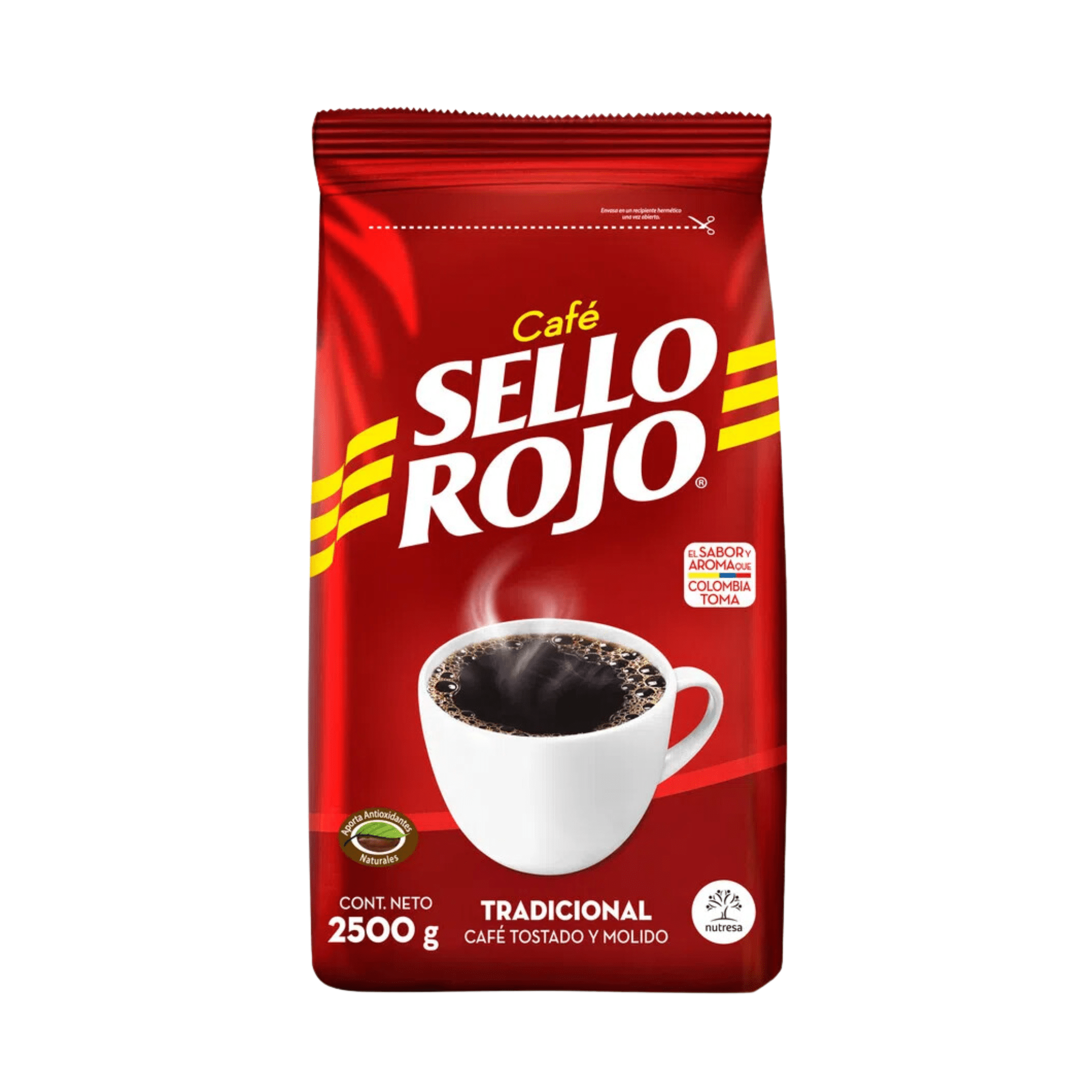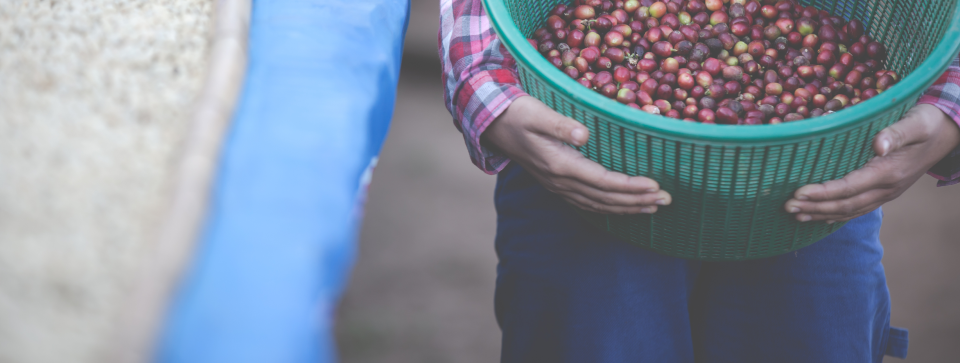


Sello Rojo
Sello Rojo Ground Coffee Tradicional
U.S. orders ship from Miami — no tariffs or import taxes - USA
Choose options
U.S. orders ship from Miami — no tariffs or import taxes - USA
U.S. orders ship from Miami — no tariffs or import taxes - USA
DETAILS
Sello Rojo Coffee: A Blend of Tradition and Quality
The Rich Legacy of Sello Rojo Coffee
Sello Rojo Coffee's journey began in 1931 in Cali, Colombia, where a commitment was made to produce the finest roasted and ground coffee. This dedication to quality has established Sello Rojo as a prominent name in Colombian coffee.
The Essence of Sello Rojo's Traditional Ground Coffee
Sello Rojo offers a traditional ground coffee characterized by its dark roast, fine grind, intense flavor, and rich aroma. This product is a testament to the labor of coffee-growing families, who meticulously harvest each bean, ensuring its journey from field to cup is steeped in quality and tradition.
Colombia's Coffee Heritage: Trust in Taste () In Colombia, where coffee is ingrained in the national identity, Sello Rojo is a trusted choice among coffee growers and aficionados. This land, renowned for producing top-tier coffee beans, sees Sello Rojo as a symbol of pure, unblended quality. The brand's commitment to excellence is evident in its sourcing from family farms in the Andean Mountains, an ideal coffee-growing region due to its perfect climate, elevation, and fertile soil.
From Bean to Cup: The Art of Perfection
Sello Rojo's Arabica coffee beans are carefully selected and handpicked at peak maturity. The meticulous process of cleaning, fermenting, and sun-drying, all done by hand in small batches by local farmers, ensures the highest quality. These steps, coupled with the antioxidant-rich nature of the coffee, contribute not only to a unique flavor profile but also to health benefits like reduced risks of various diseases.
Ensuring Freshness and Quality
To maximize the enjoyment of Sello Rojo's intense, smooth flavor with a hint of sweetness, the coffee is freshly roasted and vacuum-sealed. This process preserves the beans' freshness and aroma, maintaining the integrity of the coffee until it reaches your cup.
Delving into the Rich History of Sello Rojo
Sello Rojo's story is deeply rooted in Colombian coffee culture. The brand started its journey in 1959 in Medellin, Antioquia, overcoming challenges to establish itself as a significant player in the coffee industry. Through innovative packaging techniques and expansion strategies, Sello Rojo has continuously evolved, maintaining its reputation for quality and tradition.
The Roasting Process: Craftsmanship and Quality
The roasting of coffee beans is an art form that significantly influences the final cup's quality. Sello Rojo has mastered this art, ensuring that each bean is roasted to perfection, tailored to bring out the unique qualities and flavors that make Arabica coffee a preferred choice worldwide.
Meeting the Demands of a New Coffee Culture
As consumer preferences evolve, Sello Rojo remains at the forefront, catering to a growing base of discerning coffee lovers. The brand's dedication to quality, from sourcing to roasting, has solidified its status as a beloved and respected name in the world of coffee.
Sello Rojo Coffee not only represents a rich history and commitment to quality but also embodies the heart and soul of Colombian coffee culture. It's a brew that brings people together, offering a taste of Colombia's finest with every sip.










